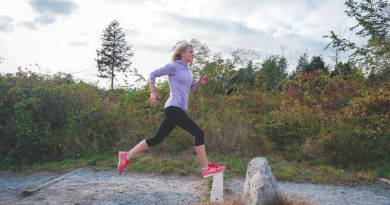Evolving Sports | Out and About January 2013
Not long ago, I was made aware of how dramatically some sports can evolve and even transform through the years. Of course, a sport like marathon running has changed relatively little in the 116 years since a handful of stalwarts toed the line in Hopkinton for the 26.2-mile race into Boston. Running clothing has certainly become more functional, shoes are definitely lighter and more comfortable, and training for the marathon is far more scientific and systematic. But the basic activity of running 26.2 miles has hardly changed in more than a century.
Not so with Nordic skiing. In the early 1980s, the skating revolution threatened to tear the sport of cross-country racing in two. For centuries, extremely fit competitors in the northern latitudes had been kicking and gliding through the snow-covered forests and fields, testing themselves against each other and the elements. A vital component of this “classic” type of skiing was the unique property of the wax that was applied to the running surface of the skis, simultaneously providing grip or purchase as the skier weighted the ski to stride forward and glide as the ski broke free, sliding forward over the snow.
In the early 1980s, large snow-grooming machines were used to pack wide swaths of trail, especially in the increasingly popular mass-start ski marathons like the Vasaloppet in Sweden and the Birkebeiner in Norway. Innovative skiers, including Bill Koch from Guilford, Vermont, discovered they could travel faster over the packed surface by pushing diagonally off to the side, similar to speed skaters. The real breakthrough came when these racers realized they could dispense with kick wax entirely, prepare their skis purely for speed (like Alpine skiers), and skate an entire course significantly faster than with the traditional, kick-and-glide technique.
For a couple of years, the sport was in turmoil. At first skating was declared illegal and athletes using the technique were disqualified. Race courses were groomed to make skating difficult, if not impossible. But thankfully, sanity prevailed and the FIS (International Ski Federation) eventually recognized skating as a distinct discipline from the traditional “classic” kick-and-glide technique. Now, 30 years after the skating revolution, cross-country skiing enjoys more popularity than ever before, driven at least partially by an increased number of televised events at the Winter Olympics.
Which brings me back to my recent revelation. For the past two decades, the annual Vermont High School Cross-Country Running Championship has been hosted by Thetford Academy on the challenging Dan Grossman Woods Trail. It is a relatively convoluted, five-kilometer loop, predominately through forest, encompassing more than 200 vertical feet from the low point to the high point of the course. Through the years, races have been held in stifling heat, pouring rain, and even snow, but Vermont’s high school runners typically finish the course with a sense of accomplishment, many having tested themselves to the limit.
Not long ago, I learned that Louisville, Kentucky, a city with a passion for a variety of sports, aspires to become a recognized center for cross-country running. There are plans to develop a cross-country running venue to rival the best courses in the nation. I was surprised and disappointed to discover that the courses currently regarded as state-of-the-art, including trails at Terra Haute, Indiana, and Madison, Wisconsin, are basically flat, containing less than 20 percent of the climb of the Thetford course. I have learned that the two factors driving cross-country running at the elite level these days are fast times and safety. In other words, top collegiate coaches avoid challenging, hilly courses because their athletes run slower times, and they prefer a smooth, fairway-like, grassy surface because they don’t want their thoroughbreds tripping on roots and spraining ankles.
Ironically, a century ago, the original cross-country running events in England often required the athletes to vault fences and ford streams. Athletes who crossed the finish line muddy and bloody were simply part of the sport. I suspect that the gentrification of cross-country in America stems from running on golf courses, the only available terrain in many urban locations across the country.
My suggestion to the cross-country running community: divide the sport into two disciplines as Nordic skiing did. The first could be fast and flat, basically, track meets on grass; while the second discipline could retain the historic traditions of the sport, running through forests and fields, over roots and rocks, uphill and down.

